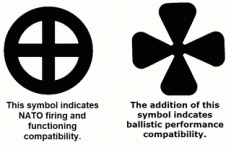Bucksnort1
New member
While gathering 9mm for a friend, I noticed the following.
Primer is sealed.
Headstamp has is Sellier and Bellot P.S. with the small circle and a + in it, which is typical of US military brass.
When he loads this brass, does he need to remove crimping in the primer pocket?
Are there any other concerns for loading?
Is S&B loading for US military?
Primer is sealed.
Headstamp has is Sellier and Bellot P.S. with the small circle and a + in it, which is typical of US military brass.
When he loads this brass, does he need to remove crimping in the primer pocket?
Are there any other concerns for loading?
Is S&B loading for US military?

